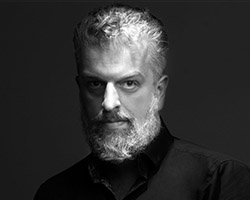Back to previous page
OUR SPECIALISTS
Every London sale is preceded by a nine-stage system of rigorous vetting and scientific testing of the material offered for sale. Finally, a panel of external experts convenes over three days, where first-hand examination of every auction lots takes place. This system allows for independent assessment of material before inclusion in the sale. For a full explanation of our vetting proceedure see: “Ils ne passeront pas!”
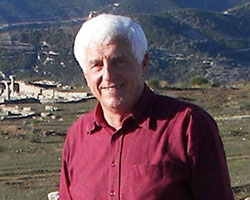
Professor Neritan Ceka
(Classical and Later Archaeology)
Enthralled with archaeology from an early age, Professor Neritan Ceka accompanied his father, the first Albanian archaeologist Professor Hasan Ceka, on his excavation of Apollonia whilst still just a child. His accomplishments since then in both academia and in the field have been numerous, graduating with a degree in Ancient History and Archaeology from the University of Tirana in 1962; co-directing the excavation of the Dardanian castle of Rosuja the following year; becoming the director of the Albanian Institute of Archaeology (1990-1992), directing excavations in Byllis (1978-1990), Apollonia and Butrint (1990-1994; 2003-2004), and at Selca e Poshtme (1969-1972; 2012-2013).
After many years studying ancient Illyrian civilization and of excavation at the settlements of Belshi, Margëlliç and Mashkjeza, Professor Ceka demonstrated the existence of a protourban period during the 6th-5th centuries BC, that preceded the flourishing of the Illyrian cities in the 4th-3rd centuries BC. Amongst his greatest discoveries thus far is the Illyrian royal necropolis in Selca. His work with colleague Professor Skënder Muçaj, in the Illyrian city of Byllis, unearthed the main monuments of the agora, along with numerous Paleochristian basilicas.
Director of conservation and restoration works at the Archaeological Parks in Burint, Byllis, Dyrrhachium and Apollonia, the Roman baths and nymfaeum of Ad Quintum, and the city walls at Byllis, Professor Ceka has also written numerous articles in Albanian and international journals. He has published important books including titles such as: Antigoneia, The History and Monuments (2009), Archaeological Treasures from Albania (2011), Illyrians to the Albanians (2014) and Starting of Illyrian City (2021). Professor Ceka has lectured in numerous European universities, and is a member of the German Archaeological Institute in Berlin and Koldewey Gesellschaft, Germany.
Professor Ceka currently works for the Albanian Institute of Archaeology as scientific advisor for the excavations of Byllis and for the Albanian Academy of Sciences, and sits as head of the History and Archaeology Committee.
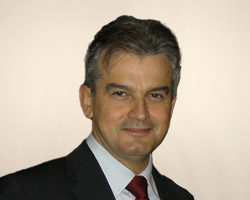
Professor Livio Zerbini
(Classical Archaeology and Roman Epigraphy)
Professor Zerbini holds a PhD in Roman history from the University of Torun (2002), where he later held the post of associate professor of Ancient history. In 2007, he was made professor of Roman history at the University of Ferrara’s Department of History and Classical Archaeology (Italy), where he founded the L.A.D. (laboratory of studies and research on Ancient Danubian Provinces).
Professor Zerbini has directed numerous archaeological missions in Georgia, where he works in collaboration with the University of Batumi, which granted him an additional degree in 2016, Honoris Causa. He is also the director of the Black Sea International Centre of Studies and researches at Batumi, and has published more than 20 monographic studies on Roman history and civilizations, together with no less than 120 articles in specialist magazines. He is currently conducting research in Romania in collaboration with the University of Cluj-Napoca, and is considered to be one of the most important scholars of the Trajanic Age.
Professor Zerbini has helped to make Classical culture more known within the wider public through media and archaeological tourism, working as a scientific consultant to the International Bourse of the Archaeological Tourism of Paestum and for archaeological Italian magazines such as Archeo, Medioevo and BBC History. He is also a prominent scientific consultant of Roman history for RAI (Italian State TV), and other important Italian TV channels. In 2005, Professor Zerbini received a special award at the International Festival of Archaeological Films by Kiel and Athens, for his documentary ‘Alburnus Maior, a treasure to be saved’, on the Roman Dacian Mines in Romania.
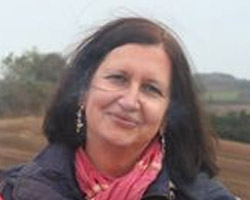
Dr Laura Vigna
(Ancient Jewellery, Ceramics & Marble)
Dr. Vigna is an archaeologist with a doctorate from the Università di Roma, La Sapienza, where she wrote her dissertation on Classical Letters. She now specialises in jewellery, statuary and pottery of the Classical World.
Since 1980, Dr. Vigna has worked for notable institutions including the Capitoline Museum, the Archaeological Superintendence of Rome, and the Central Institute for Cataloguing and Documentation, who regularly consult her analytical and cataloguing expertise, developed over years of archaeological field work and academic research.
Her substantial cataloguing experience has enabled Dr. Vigna to obtain niche skills concentrating on the scientific cataloguing of moveable private archaeological collections, the restoration of sculpture, and of the photographic and documentary evidence generated by such projects.
Dr. Vigna was selected by the Capitoline Museum as a key collaborator in the analysis and restoration of the sculptures preserved in the Sala del Fauno of Palazzo. Later, she filed the material unearthed during excavations and archaeological surveys conducted in the Sacred Area of Largo for the MAS. Her impressive portfolio also includes working at the Iris Consortium for the Automation of the National Photo Library.
In 2010, the Municipal Superintendence awarded Dr. Vigna with the responsibility of analysing and cataloguing the sculpture from the Sacred Area of Largo, Argentina. Following this in 2010-2011, she was appointed to catalogue the jewels held in the vault of Palazzo Massimo, a role which afforded her a unique opportunity to develop specialist technical vocabulary related to the Niobe Programme.
Dr. Vigna has presented papers at important exhibitions including ‘Roma Archaeologia e Progetto: papers related to a study of monumenti funerary del settore Nord di Roma’. Her notable research includes a study of a mosaic floor uncovered in the Sacred Area of Largo.
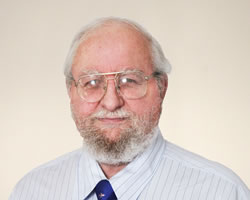
Dr Ronald Bonewitz
(Minerals, Gems, Fossils & General Antiquities)
Dr. Bonewitz is a trained geologist with a life-long interest in Mexican and Central American archaeology, having travelled extensively in Mayan Yucatan, interviewed Maya Indians, and explored previously unmapped Mayan sites on the island of Cozumel. He has been a specialist consultant to several archaeological excavations in the USA. He has worked as a geologist in the oil industry, involved in the exploration and location of oil and uranium, as well as gold mining and the underground testing of nuclear weapons. He has also worked in the aviation industry, specialising in helicopters, and having qualified as a psychologist he has lectured worldwide on personal development.
He is the author of a range of books on his many professional and personal interests including natural philosophy, crystals, minerals, alternative methods of healing, personal development, and the mysteries of ancient Mayan culture. His catalogue of titles includes Rock and Gem: the Definitive Guide to Rocks, Minerals, Gemstones and Fossils (2005); Teach Yourself Hieroglyphics (2001); Pyramids (Beginners’ Guides) (2000); Wisdom of the Maya: An Oracle of Ancient Knowledge for Today (2001); The Smithsonian Nature Guide to Rocks and Minerals (2011) and The Smithsonian Nature Guide to Gemstones (2012).
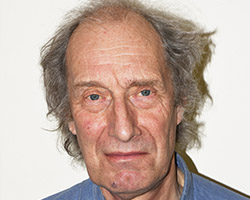
Dr Brian Gilmour
(Arms & Armour, General Antiquities)
Dr. Gilmour's specialist research interests include the origins and development of the metallurgy of early iron and steel, focussing particularly on ancient and historical weapons and other specialised artefacts. For ten years he was the principal archaeo-metallurgical researcher at the Royal Armouries, Tower of London. He has written widely on aspects of Roman and early medieval archaeology and archaeometallurgy and has contributed archaeometallurgical reports to many archaeological publications including the Anglo-Saxon Cemeteries at Saltwood (Folkstone, Kent), Edix Hill (Barrington, Cambs), Castledyke (Barton-on-Humber, Lincolnshire), Loveden Hill (Lincolnshire) as well as various archaeometallurgical papers on material or themes from the Bronze Age to the later post-medieval period, the latter including a study of the Chinese nickel brass alloy paktong. Dr. Gilmour is a Fellow of the Society of Antiquaries of London, Member of the Chartered Institute for Archaeologists, Fellow of the Royal Microscopical Society, and archives committee member of the Historical Metallurgical Society (where he is leading a project to establish a national research archive of metallographic samples from previous research).
He has collaborated with other academics in many research projects and publications, including with Professor James Allan: Persian Steel. The Tanavoli Collection, Oxford Studies in Islamic Art vol.XV (Oxford 2000); with Professor Robert Hoyland: Medieval Islamic Swords: Kindi’s treatise ‘On swords and their kinds’, the product of joint research on early written sources for archaeometallurgy, this research being ongoing Other reports and research include Excavations at Baldock 1978-1994, The Chetwode Quadrant A Medieval Unequal-Hour Instrument, The Canterbury Quadrant, Historic England’s Archaeometallurgy - Guidelines for Best Practice. He is currently co-leader of an research project (based at the Georgian National Museum) investigating the archaeological and archaeometallurgical field evidence for copper smelting and the change to iron in the late Bronze and early Iron Ages in the south Caucasus region of western Georgia, and also to look for evidence of crucible steel-making in the classical to early medieval periods now known to exist in the wider Caucasus region where it may have developed.'
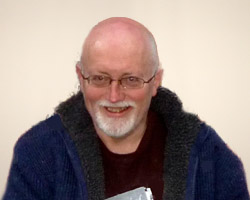
Dr Malcolm Jones
(Medieval Antiquities & Epigraphy)
Dr. Jones is a retired Senior Lecturer from Sheffield University’s Dept. English Language & Linguistics, 1994-2009. He began as a Research Assistant in the British Museum's 'Department of Medieval & Later Antiquities' in 1972. He later worked as a lexicographer for the Oxford English Dictionary and as Curator of a Folk Life Museum at Avebury, Wiltshire.
His recent publications include The Secret Middle Ages, 2002, concerning the non-religious art of the late Middle Ages, incorporating much inscriptional evidence, which won the Katherine Briggs Folklore Award in 2003. His more recent work The Print in Early Modern England, YaleUP, 2010, provides an iconographic survey of the single-sheet prints produced in Britain during the early modern era. Presently, he is a consultant to the Portable Antiquities Scheme for the reading of inscriptions. His research interests include the short legends found on late medieval 'posy' rings, brooches, etc.
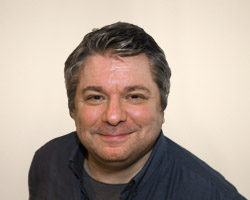
Dr Ittai Gradel
(Roman Gemstones & General Antiquities)
Dr. Gradel is an authority on Roman antiquities who has held a number of positions in Danish universities and was a visiting fellow at Brasenose College, Oxford University in 2004-5. He was Associate Professor, History & Archaeology of the Roman Empire in the Department of Classics, University of Reading from 2005 to 2008. He holds an MA in Classical Archaeology from Aarhus University, Denmark and was Gold medallist of Aarhus University in 1988; he was awarded D.Phil. (Oxon) in Ancient History in 1995; his thesis was on Roman imperial cult in Rome and Italy and was later expanded and published as the monograph: ‘Emperor Worship and Roman Religion’, (Oxford University Press, 2002; 2nd ed. (paperback) 2004) and is now standard in Ancient History reading lists on the religious life of the Roman Empire.
Dr Gradel has published a large number of articles on aspects of Roman history, religion in the Roman Empire, Roman epigraphy, and archaeology. Since 2008, he has worked as a consultant and dealer in antiquities and Medieval manuscripts. His main speciality is engraved gems of the Graeco-Roman world, with proficiency also in the fields of Graeco-Roman bronze and marble sculpture, Latin and Greek epigraphy, and Medieval and later palaeography.
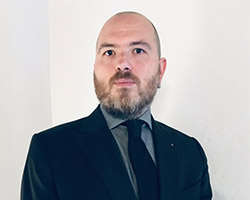
Dr Alberto Pollastrini
(Egyptian & Associated Antiquities)
Dr. Pollastrini is a leading Italian historian and archaeologist. He holds a PhD in Egyptology from the EPHE, Paris, and two Masters in Egyptology and Cultural Heritage Studies from the University of Turin, where he specialised first in the archaeology and history of Egypt and the Near East, and later in Egyptology. Dr Pollastrini has published several academic works on Egyptian weaponry, armour, military vehicles and technology, poliorectics, iconography, and the genesis and perpetuation of traditions. He has also presented on the evolution and syncretism of local Egyptian cults and the three-dimensional representation of ancient artefacts. Naturally, he was appointed a leading role in the research and organisation of the ‘L’Antico Egitto nelle ricerche dell’Università di Torino: dall’Isola di Nelson all’isola di File’ exhibition, held at the Turin National University Library in 2014.
Having excavated at Luxor and Alexandria, Dr Pollastrini’s expertise extend beyond the written and artistic evidence of ancient Egypt, to encompass the material remains and the languages of the cultures in which he specialises, boasting proficiency in Latin, ancient Greek and Egyptian epigraphy and palaeography.

Dr Paul A. Fox, MA, FSA
(Heraldry)
Dr Paul A. Fox, MA, FSA (heraldry) is Principal of the Institute of Heraldic & Genealogical Studies in Canterbury, honorary editor of The Coat of Arms, Journal of the Heraldry Society, and an Academician of the Académie Internationale d'Héraldique. His book Great Cloister, a lost Canterbury Tale, A History of the Canterbury Cloister, Constructed 1408-14, with Some Account of the Donors and their Coats of Arms (Archaeopress, Oxford, 2020) was awarded the Dr Walburga von Habsburg Douglas Prize in 2022. He has published widely on heraldic matters, with a particular focus on the medieval period, but maintains a keen interest in coats of arms with their crests and badges in all parts of the world and all periods. His main occupation and preoccupation is heraldic research and education. In recognition of his academic expertise he has been elected to various distinguished fellowships, including that of the Heraldry Society.
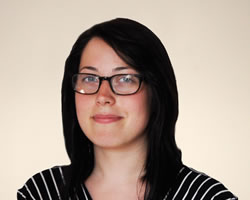
Dr Laura Proffitt
(Classical & General Antiquities)
Dr. Proffitt graduated with a B.A. (First Class) and a M.A (with Distinction) degrees in Ancient History from the University of Durham, and went on to complete a Ph.D in ancient Greek artistic and dramatic representations of slavery at Royal Holloway, University of London. She has taught evening classes on Greek and Roman art, drama and history at Birkbeck College, University of London and is the author/editor of “Reading Ancient Slavery” (Duckworth Books, 2010).
After a spell working in the press office of a publishing company, Laura spent two years getting to know the auction world at Bonhams, where she worked closely with the antiquities department, and was involved in the production of several catalogues. She has worked as a historical researcher for the television industry. Laura is proficient in Classical Greek and Latin and is presently studying Biblical Hebrew. Whilst dealing with a wide range of artefacts, her particular interests lie in Greek ceramics and Roman glass and jewellery.
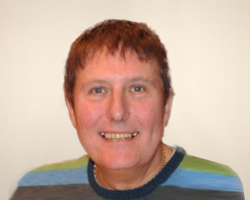
Dr Robert Chandler
(Natural History)
Dr. Chandler is a retired science teacher and presently a research assistant at the Department of Earth Sciences, Natural History Museum, London. He is an adviser on geological matters to Natural England and Dorset County Council. He is a Fellow of the Geological Society of London and holds degrees in both geology and biology with honors. From 1990 to 2011 he was Lecturer in palaeontology to the regional groups of the Geologists’ Association and from 2011 to 2014 a Council Member to the Palaeontographical Society, London. He is Field Trip Secretary to Dorset Geologists’ Association and President of Horsham Geology Field Club.
Robert has authored more than fifty peer-reviewed publications and books concerning Jurassic palaeontology, specialising in ammonite systematics and biostratigraphy. 2017 will mark his 50th year of research, mostly in Dorset and Somerset. In the early years, he made studies of most of the British Mesozoic and Caenozoic locations thus becoming familiar with many of the fossils encountered.
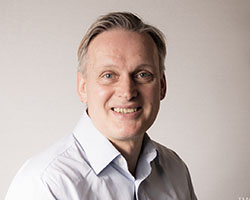
Paul Whelan, MA
(Egyptian Antiquities)
Paul Whelan holds a degree in Ancient Egyptian and the Near Eastern History from University College London and a master’s degree in Egyptian Archaeology from the Institute of Archaeology UCL. His main research interests and topics of his numerous peer-reviewed published works focus on cult practices in the ancient Egyptian Middle Kingdom and Second Intermediate Period, especially from the important archaeological site of Abydos.
From 1999 – 2009 he was sessional DCE lecturer in Egyptology for the University of Reading and since 1999 sessional DCE lecturer in Egyptology for the University of Oxford. He has also lectured at various universities and societies in the UK, USA and Italy. He is a member of the advisory board of the prestigious Middle Kingdom Studies publication series and co-founder of the lecture and course provider Ta-wer Egyptology.
Periklis Mastrangelis, MA
(Numismatics)
Periklis Mastrangelis holds an MA in History of Philosophy from Aristotle University, Thessaloniki, Greece and a BA in Theology from the same institution.
He has been a student of ancient numismatics (mainly Greek and Byzantine) with the Institute of Historical Research at the National Hellenic Research Foundation in Athens and participated in many seminars where his detailed knowledge of Greek and Latin epigraphy complemented his precise specialized expertise in Greek linguistic history – archaic, classical, Hellenistic and Biblical, as well as Byzantine and later Mediaeval.
Periklis has a wide-ranging interest in history and historical studies, coupled with an abiding passion for the Classical and Byzantine periods in particular, focusing on literary research. This, in tandem with his numismatic expertise, has led him to specialize in classical numismatics and sigillography. He is proficient in Modern Greek, French, Italian German and English as well as the Greek language of many periods. Historical linguistics, both synchronic and diachronic, are among his private research topics. He is a full member of the Royal Numismatic Society in the UK.
Material culture, onomastics (personal- and place-name studies) and literary studies form just part of his range of continuing interests. He has organized and curated many numismatic and other collections with a view to publication, and has worked in leading roles in both Germany and the United Kingdom in the numismatic field.
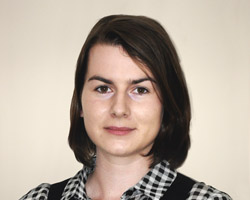
Michaela Simonova, MA
(Viking, Mesoamerica, Religious & General Antiquities)
Michaela completed a five-year degree in comparative religion, specialising in Mesoamerica, at Comenius University, Bratislava, Slovakia. She is a member of the Centre of Mesoamerican Studies and co-organised the centre’s 2014 European Maya Conference. Her primary interests include iconography and epigraphy, in particular Mayan hieroglyphic writing.
She also holds an interest in the history and art of pre-Christian Scandinavia, including the Baltic and Rus regions, and has participated in a Swedish seminar series focused on Scandinavian rock art. Her Bachelor’s dissertation focused on the god Loki, whilst she addressed representations of the Valkyries for her Master’s thesis. Michaela is also familiar with the art and religions of the ancient Western Asia, Greece, Rome, and the Caucasus.
Thomas F. Sturm, MA
(Cylinder Seals)
Sturm has led the field in the study of cuneiform script, Old Aramaic, Old Assyrian and Old Babylonian for many years.
He graduated from Martin-Luther-University Halle-Wittenberg, Germany, in 1985 with an MA in Oriental archaeology specialising in cuneiform philology (Sumerian, Akkadian), Hebraicum and the study of Altaramean. His doctorate at Westfälische Wilhelms-Universität Münster, Faculty of Ancient Oriental Studies included a Major in Ancient Near Eastern Philology (Assyriology), with a First Minor in Ancient Near Eastern Studies and a Second Minor in Prehistory and Early History. In his various academic positions Dr. Sturm has researched a range of specialist subjects, and is in the process of preparing for publication a definitive handlist of Old Assyrian characters which will assist the academic world in accurately deciphering texts in this ancient language.
Simon Schmidt
(Jewellery & General Antiquities)
A long-term passion for history and ancient artefacts led to his appointment as a Curator at the British Museum, a post he held for five years (1981-1986). At this time he was awarded a diploma with honours by the Gemmological Association. At the museum, his interest reverted to jewellery which led to publication of some of his ancient goldsmithing research in conjunction with the Society of Ancient Jewellery.
In the 1990’s Simon became a Fellow of the Royal Numismatic Society and launched an ancient jewellery conservation business. Since starting this venture, he has conserved ancient metal objects and jewellery on behalf of many leading museums, auction houses and private collectors. At present, his principal interests are in the conservation of ancient jewellery and coins, and in consultation and authentication for leading London auction houses.
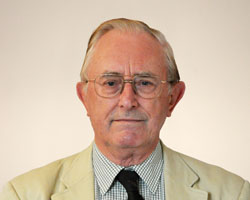
Peter Clayton, FCILIP, Dip, Arch, FSA, FRNS
(Egyptian & General Antiquities)
Peter is an Egyptologist, archaeologist and numismatist who worked for many years at the British Museum and excavated on sites in England and Egypt. He has lectured widely in England, Europe and Australia on Egyptology, archaeology, antiquities and numismatics. When Peter left the British Museum in 1980 he was invited to found the Antiquities Department for B. A. Seaby, and remained head of it until 2010. He was also the Founding Chairman of the Antiquities Dealers Association (ADA) in 1982, and is currently the Treasurer of that body.
Peter appears on radio and television programmes dealing with current archaeological and Egyptological topics and has been featured in a number of educational programmes on British and American television. He is the author of several international best-selling titles including ‘Chronicle of the Pharaohs’ (now translated into fifteen languages), ‘The Rediscovery of Ancient Egypt’, ‘The Seven Wonders of the Ancient World’ and many others.
He was the Consulting Editor and Book Reviews Editor of ‘Minerva’, the International Review of Ancient Art and Archaeology, which he founded for Dr J.M. Eisenberg in 1990. He is a member of the Treasure Valuation Committee, The British Museum, and Expert Advisor for coins and antiquities to the Department of Culture, Media and Sport, the National Art Collections Fund and the Heritage Lottery Fund, and acts as advisor to several departments of the British Museum and to many national and archaeological museums. He is a Freeman of the City of London, and a Liveryman of the Worshipful Company of Farriers and of the Company of Arts Scholars.
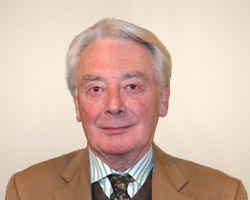
Richard Falkiner, FSA
(Senior Consultant)
Richard had a successful career with two of London’s main auctioneers where he was at various times head of Antiquities, Medieval, Renaissance and Islamic Coins, and the Medals Departments. He was the compiler or editor of over three hundred auction catalogues over the period 1956 to 1972 and many since. Some of these catalogues remain standard works most noteworthy being the two Northwick Park (Captain E.G. Spencer-Churchill) Antiquity sales (1965) and the Storm Rice collection of Islamic art (1963). His main specialties are coins and medals with engraved gems (glyptics), from pre-historic times on, as his primary interests. This work was, at the time, the only work in print and in English. It is still referred to. He has had for several decades a regular column in the Antiques Trade Gazette, where he also reports on numismatic auctions.
From 1972 he went on his own and has not regretted it. He has sat continuously and often as chairman, on the Vetting Committees of the major London art fairs for over 50 years, covering Ancient (Classical and near Eastern), Medieval Art and Coins, at Grosvenor House, succeeded by Masterpiece, Olympia, BADA and most recently at the Frieze Fairs. His main specialties are coins and medals; with engraved gems (glyptics), from pre-historic times onward, his primary interest. His library and unpublished files must be one of the most comprehensive of its type in private hands.
Since 1996 Falkiner has been on the British Museum treasure valuation panel (Treasure Act 1996). Now he advises museums, private collectors, dealers and auctioneers from all over the world.
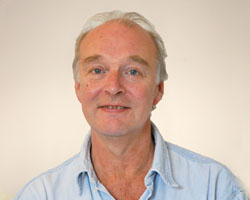
Peter Bufton
(Ethnographic, Far Eastern & General Antiquities)
Peter, an alumnus of Merchant Taylor’s School, founded in the third quarter of the 16th century, particularly enjoyed history, Latin, English and sport as well as collecting coins, stamps and a variety of curiosities during his growing-up years. Merchant Taylor’s ethos is as old as the school itself: “It is not a mind, not a body that we have to cultivate, but a man, and we cannot divide him” (thus spake MTS’s first headmaster, Richard Mulcaster, in 1561). Some notable past alumni include various remarkable individuals such as Clive of India, Scott of the Antarctic and Boris Karloff (of Dracula fame). Such holistic thinking inspired Peter to join Knight, Frank & Rutley at the age of eighteen, having previously worked with an oriental art dealer, and then Christie’s of St. James’s the following year.
Peter gradually rose through the ranks becoming an auctioneer, head of Chinese jade / snuff bottles, head of Japanese / Korean art and then Director. After 16 successful, enjoyable, stimulating and much-travelled years, Peter left Christie’s to take a year’s sabbatical before becoming a Vice-President at Sotheby’s New York. During his time at Christie’s and Sothebys’ he produced more than eight catalogues per year, resulting in a total of more than 250 over the course of his career. His major specialisms included netsuke and inro, Japanese ceramics, lacquer and metalwork, Chinese jade and snuff bottles. Eventually tiring of the Big Apple, he returned to the UK to seek new challenges and take up consultancy posts at Phillips and Bonhams as well as Habsburgs, Geneva.
Since the mid-1990s, Peter has greatly enjoyed working as an independent Far Eastern art consultant advising various museums, auction houses and private collectors in connection with Japanese, Korean, Chinese and South East Asian Art (as well as some Ethnographic Art, a personal passion of his, particularly American Indian culture). He has written many articles over the years and after helping to organise an exhibition of Japanese ceramics belonging to the Lupin Foundation at the New Orleans Museum of Art in 1997, he then co-wrote the exhibition catalogue. Nowadays he spends much of his time travelling, following the International Art Market and indulging his passion for Far Eastern and South East Asian culture, whilst being involved in further challenging and unusual projects.
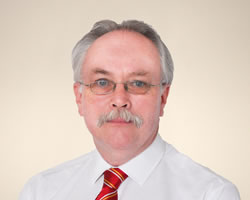
Stephen Pollington
(Anglo-Saxon, Viking & General Antiquities)
Stephen has been studying the linguistic and material culture of early mediaeval Europe for more than thirty years, during which time he has written more than a dozen books on various aspects of Anglo-Saxon England and its neighbours. His research interests range from early medical literature to the manufacture and use of edged weapons, the contents and distribution of burial mounds to the social phenomenon of communal feasting, the nature of religion in the Iron Age to the runic writing systems of Scandinavia and England.
His ‘Wordcraft’, first published in 1994 and still in print, provides a Modern English to Old English dictionary and thesaurus and has been a mainstay title for students wishing to compose in Old English or to familiarise themselves with specific areas of vocabulary. ‘The English Warrior’, first published in 1996, is an examination of the warrior ethos of the Anglo-Saxons and their neighbours, providing Old English texts and translations for several poems and excerpts from the Anglo-Saxon Chronicle and an overview of weapons and warfare. ‘Meadhall – The Feasting Tradition in Anglo-Saxon England’ (2003; 2nd edition, 2011) offers an introduction to the role of feast-giving and hosting in early mediaeval societies (Anglo-Saxon, Welsh, Irish and Scandinavian) and has proven popular with historians trying to understand the dynamics of the world of ‘Beowulf’ and the role of public gift-giving. In 2001 he published ‘Leechcraft’, an examination of the medical traditions of Anglo-Saxon England through fresh translations of three key texts: the ‘Lacnunga’, ‘Old English Herbarium’ and ‘Bald’s Leechbook’. In 1997, ‘First Steps in Old English’, an introductory course in the language was published, and is now in its third edition. He produced a double CD of readings in Old English, including many standard texts; students have found the spoken texts make a great deal of difference when approaching the language for the first time. More recently, in ‘Elder Gods – The Otherworld in Early England’ (2011), the evidence for pre-Christian religion among the Anglo-Saxons was compiled, contrasted with the more copious Icelandic texts and with the challenging archaeological evidence.
In 2008, Stephen was asked to give a lecture at the Sutton Hoo Society Conference on the subject of the Anglo-Saxon Meadhall. In 2009 he was invited to be the keynote speaker at the Cambridge University conference on hospitality and gift-giving in the Middle Ages. He has lectured widely in the UK and abroad on aspects of early English history and material culture with particular emphasis on the finds from Sutton Hoo and the Staffordshire Hoard as well as on the ‘World of Beowulf’. Apart from appearances on television as a ‘talking head’, Stephen has also worked as script consultant in historical drama and provided voice-over on series such as Michael Wood’s ‘The Great British Story’ (2012); he also appeared in ‘Michael Wood on Beowulf’ (2010). Stephen collaborated with Brett Hammond and Lindsay Kerr on the 2010 book 'Wayland’s Work', documenting Germanic material culture in the post-Roman world; from there developed a close working relationship with TimeLine.
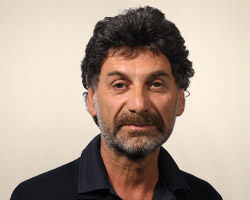
Amin Rezai
(Western Asiatic, Islamic and General Antiquities)
Amin has been studying material culture and coinage of the ancient Middle East and Europe for more than forty years. After moving to the UK in 1977, as a teenager he started his career with coins. Amin subsequently gained experience in jewellery by working in Hatton Garden in the late 1980s. Wanting to strengthen his knowledge on the subject of gemstones, he studied gemmology for two years.
Over the past decade he has consulted on various aspects of Islamic and ancient cultural material for various important private collections. His research interests range from objects from the Elamite, Bactrian, Achaemenid and Sassanian cultures, as well as those from the Islamic world and further afield.
Amin brings with him a lifelong experience of examining ancient objects and with this practical experience follows a good eye, renowned for recognising something special. He has become a good source of advice for many people requiring guidance with ancient art, and joined the TimeLine vetting team in 2018.
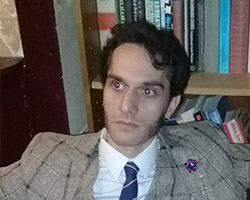
Mehdy Shaddel
(Western Asiatic & Islamic Antiquities)
Mehdy Shaddel is a historian of the late antique Near East, specialising in the socio-economic, political, and religious history of the early Muslim empire. He has published on the Arabic historiographical tradition, the Quran, and the material culture of early Islam, as well as on pre-modern religion, apocalypticism and eschatology, and comparative empires and state formation. Amongst other things, he is currently completing a monograph on the Second Muslim Civil War, tentatively entitled The Sufyanids and the Beginnings of the Second Civil War, 660-685 CE. He is also working on a critical edition and translation of The Book of Viziers and Secretaries, a bureaucratic history of the early Islamic empire composed in the tenth century CE. In his free time, he also writes on current affairs.
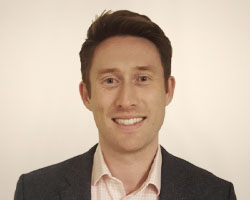
Richard Roy
(Ancient Americas)
Richard Roy is an avid collector whose passion for the ancient arts of the Americas began following an impromptu visit to a gallery in Paris. He developed his interest of this niche market by expanding his knowledge through personal research, amassing a library of rare publications and catalogues.
His interest in the material is further fuelled by the limited understanding of the function and meaning of this powerful art which continues to intrigue and challenge those who are open to engaging with it. Richard has particular affection for the arts of the pre classic period including ancient West Mexico as these pieces display a range of styles imbued with spiritual meaning. Richard frequently attends galleries, auctions and museums to develop his expertise and network in this field.
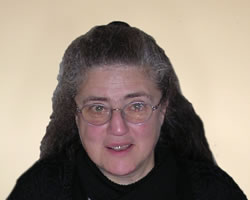
Stefany Tomalin
(Beads & Associated Jewellery)
After art school in London, Stefany decided to specialise in the study and creation of beads because so little was known of their origins, materials, techniques, traditions and history. She made and collected every type of bead, designed jewellery with beads, and did original research.
Stefany ran a successful bead shop in Portobello Road for almost 20 years, wrote three popular books on the subject and founded the Bead Society of Great Britain in 1989. She is a committee member of the Bead Study Trust, and belongs to the Society of Bead Researchers and Society of Jewellery Historians, etc. Stefany has lectured on aspects of beads at local and international conferences and to special interest groups.
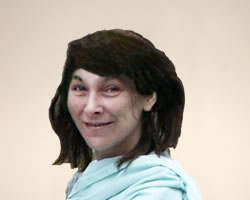
Dane Kurth
(Ancient Greek, Roman & Byzantine Coins)
Educated at a north-west of England high school where field trips to archaeological digs sparked her interest in ancient history. She bought her first ancient coin in the 1970s and began to build the foundations of her extensive knowledge of Greek and Roman numismatics. A French and German speaker, with a good understanding of Italian, she enjoys translating 19th century numismatic works, and placing them in the public domain.
A member of the world-renowned Wildwinds website, Dane played a major role in bringing the archive to its award winning status. She was pleased to accept TimeLine Original's offer to appoint her Curator of Wildwinds following the death of its founder. Praise from around the world has been bestowed on her curatorship. In addition to her Wildwinds duties, Dane compiles the popular online Helvetica's RIC Lists, used by collectors, museums and coin dealers worldwide. In England PAS officers rely heavily on this research when identifying finds.
Michael Howgate B.Sc. M.Sc. PGCE FLS
(Geology & Natural History)
Michael Howgate is a retired geologist and dinosaur specialist. He is Recorder for Geology for the county of Hertfordshire and chairman of the Amateur Geological Society. Michael has worked in the oil industry as a geology specialist in the Mediterranean zone, South Asia and northern Europe.
His MSc in Vertebrate Palaeontology has led to a second career lecturing on aspects of dinosaurs and their morphology. Having founded the popular ‘Dinosaur Collectors Club’ in 1989, he writes regular magazine article on the topic, concentrating on the fascinating history of the public understanding of fossils in general and dinosaurs specifically, including through the media of artists’ interpretations and cinematic realisations. His other research interests include Ethnography and Prehistoric Rock Art, on which he publishes articles occasionally. He is a qualified City of London Guide and has written regular articles on ‘City of London Building Stones’ for the quarterly magazine ‘City Guide’.

